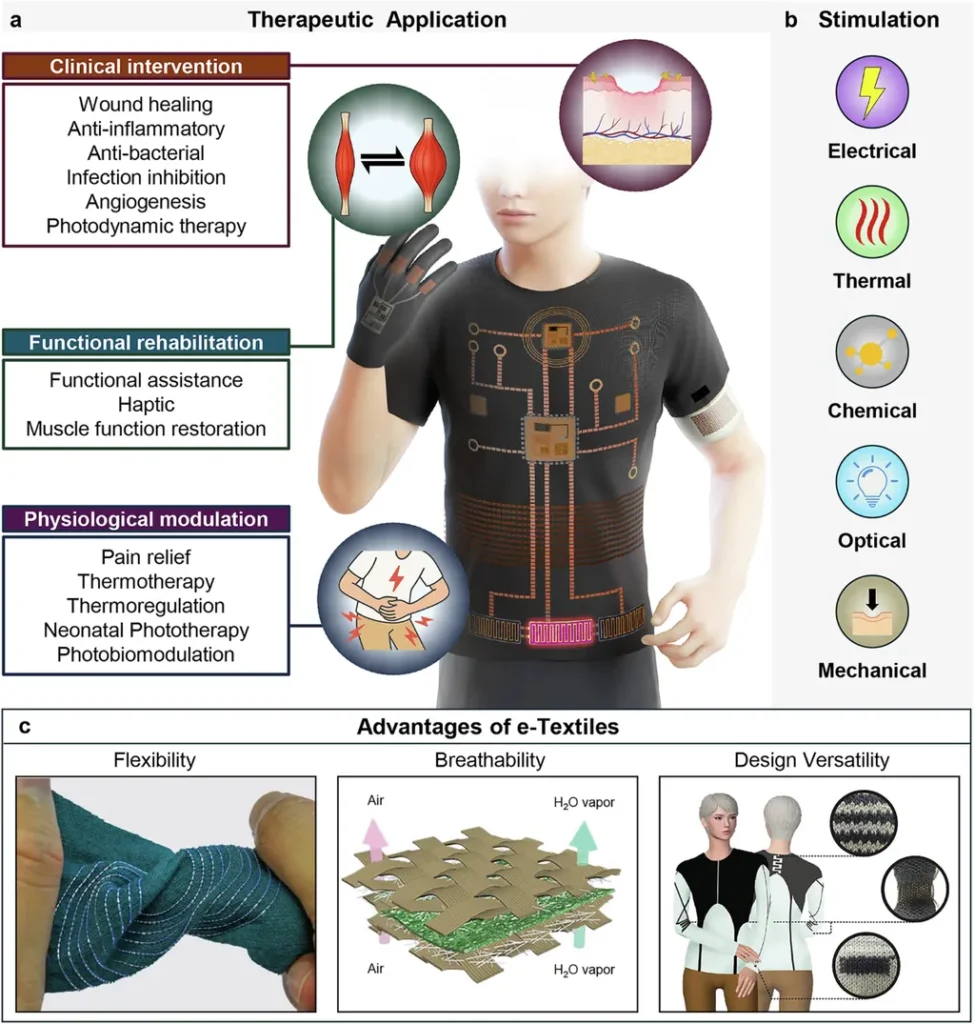In the rapidly evolving landscape of wearable technology, a groundbreaking review published in the journal ‘npj Flexible Electronics’ (translated from its original title as ‘Flexible Electronics’) is set to revolutionize therapeutic applications. Led by Byeong Woon Lee from the Department of Electrical and Computer Engineering at Sungkyunkwan University, the research delves into the transformative potential of textile electronic systems, offering a glimpse into a future where clothing could double as sophisticated medical devices.
The study highlights the unique advantages of textile-based electronics, which seamlessly integrate with the body, providing softness, breathability, and scalability. These qualities are crucial for wearable therapeutic systems that must operate reliably under strain and deliver sustained stimuli. “Textile electronics represent a paradigm shift in wearable technology,” Lee explains. “They combine the comfort and familiarity of everyday clothing with advanced electronic functionalities, creating a new frontier in personalized healthcare.”
The review outlines the key components of therapeutic e-textiles, including materials, structural design, functionalization, and system integration. It explores various modalities such as electrical, thermal, chemical, optical, and mechanical stimuli, each with its own set of clinical applications. For instance, electrical stimulation can be used for muscle rehabilitation, while thermal regulation can aid in wound healing. The study also emphasizes the importance of energy solutions, discussing the integration of power sources and energy storage systems to ensure the longevity and reliability of these wearable devices.
One of the most compelling aspects of this research is its potential impact on the energy sector. As wearable therapeutic systems become more prevalent, the demand for efficient and sustainable energy solutions will grow. This could open up new opportunities for energy companies to develop innovative power sources and storage technologies tailored to the unique requirements of e-textiles. “The energy sector has a crucial role to play in the advancement of therapeutic e-textiles,” Lee notes. “By collaborating with researchers and healthcare providers, energy companies can contribute to the development of next-generation wearable technologies that are both effective and sustainable.”
The review also addresses the challenges that need to be overcome for the widespread adoption of therapeutic e-textiles. These include durability, performance, and manufacturing scalability. As the technology matures, it is expected that these challenges will be addressed, paving the way for personalized, wearable therapies that can be seamlessly integrated into daily life.
In conclusion, the research led by Byeong Woon Lee offers a comprehensive overview of the current state and future potential of textile electronic systems for therapeutic applications. By highlighting the unique advantages of e-textiles and exploring the various modalities and energy solutions, the study provides valuable insights into the future of wearable technology. As the field continues to evolve, the collaboration between researchers, healthcare providers, and energy companies will be crucial in realizing the full potential of therapeutic e-textiles. With its focus on practical, personalized therapies, this research is set to shape the future of healthcare and the energy sector alike.

